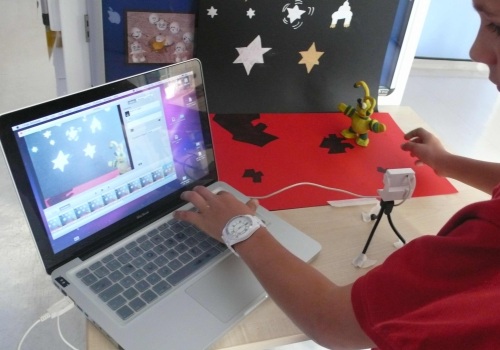The Children’s Hospital School is a Foundation Special School located on two sites, one at Great Ormond Street Hospital and the other at University College Hospital. Situated in central London, the school has an average roll of between 130 - 140 students aged 5-18, many of whom are long stay or recurring patients. The school serves a national and international catchment area with many patients coming from the Middle East and the EU.
 ipod nano vector art, by Odenosuke http://www.flickr.com/photos/yoko69/As may be surmised, the children and young people in this school are in a very different situation from those in mainstream schools. From their point of view, especially those who are long-term or recurring patients, being able to connect to home schools, friends and family from the bedside is a psychosocial necessity as well as an educational one.
ipod nano vector art, by Odenosuke http://www.flickr.com/photos/yoko69/As may be surmised, the children and young people in this school are in a very different situation from those in mainstream schools. From their point of view, especially those who are long-term or recurring patients, being able to connect to home schools, friends and family from the bedside is a psychosocial necessity as well as an educational one.
From the school’s point of view, the potential benefits of implementing a Bring Your Own Device (BYOD) scheme are that patients are familiar with their own technology, software and devices, some of which may be very specific to their particular learning need and requirements. Children and young people are, when well enough, able to access curriculum resources and learning materials provided by the Hospital school via its website and are, in addition, able to connect to their home school’s Managed Learning Environments (MLE). BYOD is also a no- brainer in terms of cost efficiency as there are in excess of 350 patient beds at GOSH alone!
The unique challenge for the school is balancing the need and desire to enable all long stay students to be able to access their own device with the need for security. Although this challenge is faced by other schools, the uniqueness in this case stems from the fact that 80% of the student population changes very frequently, so the school has little idea what devices students will be bringing.
For now, according to John Sosna, Assistant Headteacher and Head of ICT, the school has adopted the approach of taking small steps and doing things one at a time rather than rushing headlong into it. It will try, subject to resources and manpower, to accommodate any device so long as it conforms to industry standards and can be put on the network safely and securely. To date PC laptops, MacBooks, iPods, iPads, Nintendo DSs, Playstations and X-Boxes have been connected. The school tries to be as flexible as possible and judges each situation on its own individual merits.
 Using the technology -- Photo supplied by John Sosna
Using the technology -- Photo supplied by John Sosna
The Hospital is setting up a ‘Patients and Families’ WiFi network, which will be open to all, but for now the school continues to be the sole provider of wireless Internet access for patients via its own physically distinct LAN/WAN network.
To ensure that all patients are able to be connected to the internet regardless of whether they have their own device, the hospital has developed a hospital-wide Patient Bedside Education and Entertainment System which delivers filtered access to the internet, in addition to games, film, TV, radio and specific, age appropriate, hand-picked, educational links and resources (e.g. Espresso, ClipBank).
Because students could potentially all have different devices, the school cannot guarantee that each of the resources it provides will work on every platform. The inability to access Flash based resources on iPads is a particular bug-bear. However, probably the biggest challenge in implementing BYOD is, as far as the school is concerned, security and ensuring that there are sufficient resources and manpower to keep patients connected whilst ensuring that they are educated about internet safety and protected from unsuitable content on the internet.
Because of the transient nature of most admissions, together with the fact that the scheme has not been fully implemented yet, it is difficult to fully evaluate the success of the BYOD programme at the moment. Feedback from patients and families, together with everyday experience, suggests that the scheme has been very successful, especially in terms of ensuring pupils and patients don’t fall behind in their studies and feel part of a wider, supportive, learning community.
You can find out more about the school from its website.
